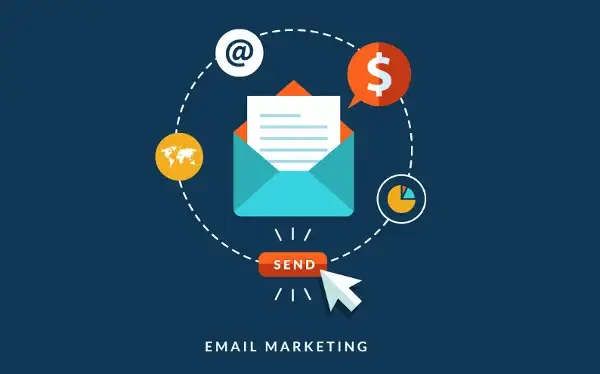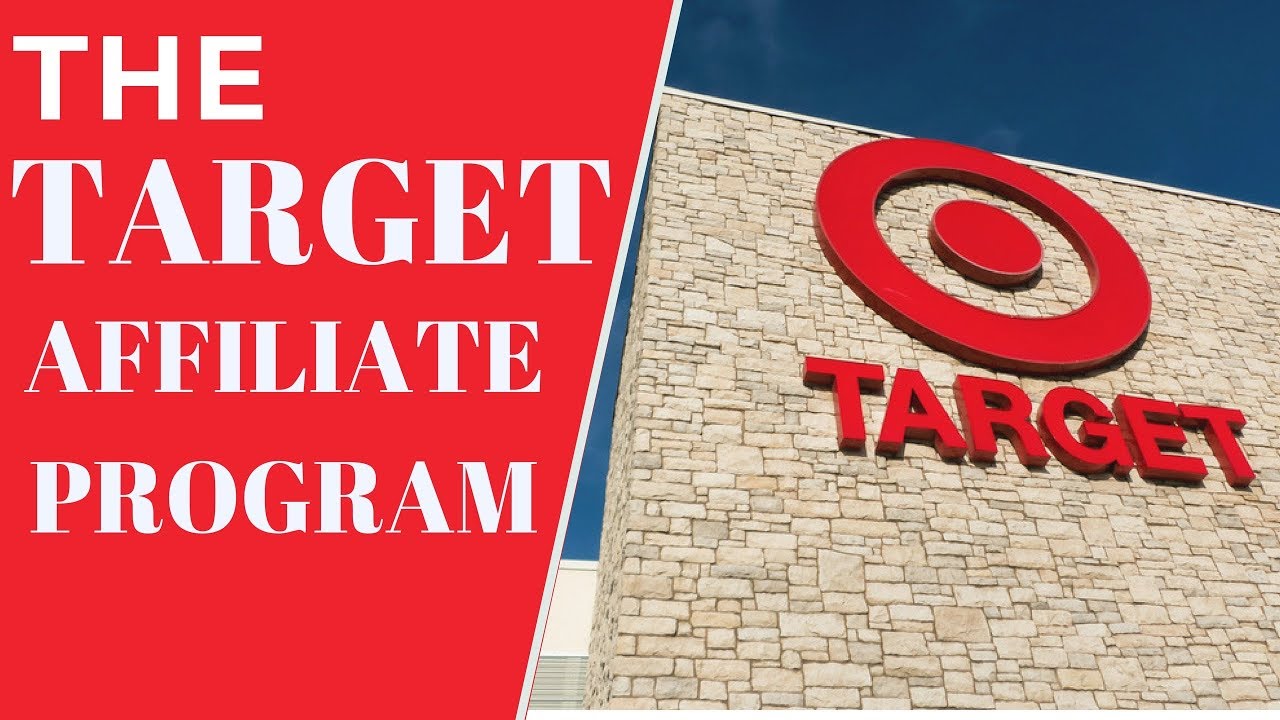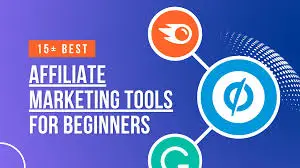Introduction
Affiliate marketing is a great way to earn money online, and it’s entirely possible to start affiliate marketing with no money. You don’t need a website or costly tools to begin—just the right strategy and dedication. In this guide, we’ll show you the essential steps to get started, from choosing the best marketing channels to creating engaging content that attracts and converts your audience. Whether you’re a beginner or looking to scale, this guide will provide you with everything you need to succeed in affiliate marketing without any upfront investment.
How Does Affiliate Marketing Work?
Affiliate marketing is a business model where individuals earn commissions by promoting products or services from companies. Instead of creating your own products or services, you act as a middleman, guiding potential buyers to the merchant’s offerings. When someone makes a purchase or completes a desired action (like signing up for a free trial) through your unique affiliate link, you earn a commission.
Here’s a step-by-step breakdown of how affiliate marketing works:
- Affiliate Partnership: You partner with a company offering an affiliate program. They provide a unique affiliate link that tracks traffic or sales generated through your efforts.
- Promotion: You promote the product or service using blogs, social media, email marketing, or other online channels.
- Customer Action: A user clicks your affiliate link, which directs them to the merchant’s website.
- Tracking and Conversion: The affiliate program tracks the user’s action (e.g., purchase or sign-up) using cookies or tracking software.
- Commission Payout: Once the desired action is completed, the company pays you a commission, typically a percentage of the sale or a fixed amount.
This model benefits all parties involved:
- Merchants gain exposure and customers without upfront marketing costs.
- Affiliates earn passive income without the hassle of inventory or customer service.
- Consumers discover valuable products or services through trusted recommendations.
Affiliate marketing is flexible and scalable, making it an appealing option for beginners looking to start an online income stream.
Media Suggestion: Include an infographic illustrating the affiliate marketing cycle (e.g., from promotion to payout).
Is It Possible to Start Affiliate Marketing with No Money?
Yes, it is absolutely possible to start affiliate marketing with no upfront investment! While having a budget for tools and advertising can accelerate growth, beginners can leverage free resources and platforms to kickstart their affiliate marketing journey.
Here’s how it’s achievable without any financial investment:
- Free Marketing Channels:
Platforms like social media (Instagram, TikTok, Pinterest), YouTube, and free blogging sites (e.g., WordPress.com, Medium) allow you to promote affiliate links without paying for hosting or ads. - Organic Traffic:
Instead of relying on paid advertising, focus on driving organic traffic. This involves creating valuable, search-engine-optimized content to attract your audience naturally. - Affiliate Networks with No Entry Barriers:
Some affiliate programs don’t require prior experience or an existing audience to join. Popular programs like Amazon Associates, ClickBank, and ShareASale are beginner-friendly and free to join. - Leverage Free Tools:
Use free tools for keyword research, such as Google Keyword Planner, and create visually appealing content using Canva’s free plan. - Focus on Content Creation:
Start with content types that require minimal investment, such as reviews, how-to guides, or tutorials related to your niche.
Pros of Starting Affiliate Marketing with No Money
- Low Risk: No upfront investment means no financial risk if things don’t go as planned.
- Flexibility: Start at your own pace and scale as you grow.
- Skill Building: You’ll learn valuable skills like content creation, SEO, and audience engagement.
While starting with no money is possible, keep in mind that reinvesting your earnings into tools, ads, or better content can significantly enhance your results in the long term.
Media Suggestion: Add a comparison chart showing the differences between starting with no money and starting with a budget (e.g., tools available, growth speed).
Steps to Start Affiliate Marketing with No Money
Starting affiliate marketing with no money is achievable by leveraging free platforms, tools, and resources. The key is to focus on building value for your audience while strategically promoting affiliate products. Here’s an overview of the steps:
- Choose your marketing channels.
- Choose a niche.
- Join an affiliate program.
- Use the right keywords.
- Create relevant and engaging content.
- Keep up with audience engagement.
Let’s dive deeper into the first two steps.
Choose Your Marketing Channels
Selecting the right marketing channels is crucial when starting affiliate marketing with no money. Your channels determine how you reach your target audience and promote affiliate products effectively.
Here are a few free marketing channels to consider:
- Social Media Platforms: Social networks like Instagram, TikTok, and Pinterest are excellent for visually showcasing products and connecting with potential customers. Short-form videos, carousel posts, and engaging captions can work wonders.
- YouTube: Creating video content is a powerful way to build trust and explain products in-depth. Tutorials, reviews, and how-to guides are highly effective formats.
- Blogging Platforms: Free blogging sites like Medium and WordPress.com let you publish SEO-optimized articles without spending on hosting. Blogs allow you to write detailed content, such as product reviews or niche-specific advice.
- Online Communities: Engage in forums like Reddit, Quora, or niche Facebook groups by answering questions and sharing your affiliate links (only where appropriate).
Choosing the right channel depends on your target audience and your strengths. For example, if you’re comfortable on camera, YouTube or TikTok may be ideal. If you prefer writing, blogging might be your go-to option.
Pro Tip: Start with one or two channels to avoid spreading yourself too thin. Build your audience on these platforms before expanding to others.
Choose a Niche
Selecting a niche is a foundational step in affiliate marketing. A niche is a specific segment of the market that caters to a particular audience with shared interests, needs, or problems.
Why Choose a Niche?
- It helps you stand out in a crowded market by targeting a specific group.
- You’ll attract a more engaged audience, increasing the likelihood of clicks and conversions.
- It simplifies content creation by giving you a clear focus.
How to Choose the Right Niche:
- Identify Your Interests and Expertise: Think about topics you’re passionate about or knowledgeable in. A genuine interest in the niche will make it easier to create authentic, engaging content.
- Example niches: Health & fitness, tech gadgets, personal finance, or sustainable living.
- Research Demand and Profitability: Use tools like Google Trends or Ubersuggest to analyze the popularity of your chosen niche. Look for niches with high search volume and multiple affiliate programs offering competitive commissions.
- Example: “Budget travel tips” might lead you to promote travel gear, discounted flight services, or travel insurance.
- Consider Competition: While some competition is healthy, avoid niches that are oversaturated unless you have a unique angle. For instance, instead of targeting “fitness,” you could focus on “fitness for busy moms.”
- Evaluate Affiliate Program Opportunities: Ensure there are enough affiliate programs offering quality products or services in your niche. Programs with a good reputation, reliable payouts, and helpful marketing materials are ideal.
Choosing the right niche is the foundation for building a sustainable affiliate marketing business. Take your time with this step to ensure it aligns with your goals and resonates with your target audience.
Pro Tip: Combine your passion with profitability by finding a niche that balances your interests and market demand.
Media Suggestion: Include a table showcasing examples of niches, their target audience, and potential affiliate programs (e.g., “Tech Gadgets,” “Gamers,” “Amazon Associates, Best Buy Affiliate Program”).
Join an Affiliate Program
Once you’ve chosen your niche, the next step is to join an affiliate program that aligns with your target audience and marketing goals. Affiliate programs are platforms where companies offer commissions to individuals for promoting their products or services. Many affiliate programs are beginner-friendly and free to join, making them ideal for starting without any financial investment.
To get started, research affiliate networks like Amazon Associates, ShareASale, ClickBank, and CJ Affiliate. These platforms offer a wide range of products and services across various industries, giving you flexibility in choosing what aligns with your niche. Additionally, some companies offer independent affiliate programs, so it’s worth checking if your favorite brands provide direct affiliate opportunities.
When selecting an affiliate program, consider the following factors:
- Commission Structure: Look for programs offering competitive commissions, either as a percentage of sales or flat fees.
- Cookie Duration: Longer cookie durations ensure you get credit for sales made days or weeks after a user clicks your link.
- Support and Resources: Opt for programs that provide marketing materials, tracking tools, and customer support to help affiliates succeed.
After joining, ensure you familiarize yourself with the program’s terms and conditions to avoid violations, such as spamming or using prohibited traffic sources. A strategic approach to choosing the right affiliate program can maximize your earning potential.
Use the Right Keywords
Keywords are the backbone of affiliate marketing, especially when working with no money. They help you attract organic traffic by ensuring your content aligns with what users are searching for online. By incorporating relevant keywords into your content, you increase your chances of ranking higher on search engines and driving clicks to your affiliate links.
Start by conducting keyword research using free tools like Google Keyword Planner, Ubersuggest, or AnswerThePublic. Look for low-competition, long-tail keywords that are highly specific to your niche. For instance, instead of targeting “fitness equipment,” use a phrase like “best budget fitness equipment for home gyms.” These keywords are less competitive and more likely to rank for targeted searches.
Once you have a list of keywords, incorporate them naturally into:
- Headings and Subheadings: Structure your content with SEO-friendly headings that include primary keywords.
- Body Text: Use keywords organically throughout your content, but avoid keyword stuffing as it can harm readability and SEO rankings.
- Meta Descriptions and URLs: Optimize these elements with focus keywords to improve click-through rates on search engine results pages (SERPs).
- Anchor Text for Affiliate Links: Use descriptive text with keywords when linking to affiliate products to make the links more appealing and SEO-friendly.
By consistently using the right keywords, you’ll attract a more targeted audience and improve the likelihood of conversions. Over time, as your content gains visibility, you can reinvest in advanced tools and paid advertising to further refine your keyword strategy.
Create Relevant and Engaging Content
Content is the heart of affiliate marketing. Without compelling and valuable content, it’s challenging to attract and retain an audience. The key to success lies in creating content that resonates with your target audience while naturally incorporating affiliate links. This approach builds trust and drives conversions.
Start by understanding the pain points, interests, and goals of your audience. Then, craft content that provides solutions or insights related to your niche. Examples of effective content formats include:
- Product Reviews: Offer honest and detailed reviews of products, highlighting their benefits and drawbacks.
- How-To Guides: Create tutorials or step-by-step guides showcasing how a product or service solves a problem.
- Listicles: Compile “Top 10” or “Best Of” lists featuring affiliate products.
- Case Studies: Share real-life examples or success stories related to your niche.
To keep your content engaging, use a conversational tone, incorporate visuals like images and videos, and break up text with bullet points and subheadings. Ensure your content is SEO-optimized by including keywords strategically. Finally, always provide value first; let your affiliate links complement the content rather than overpowering it. High-quality, relevant content builds credibility and encourages readers to click on your affiliate links confidently.
Keep Up with Audience Engagement
Engaging with your audience is just as important as creating content. Active interaction fosters trust, builds a loyal following, and increases the likelihood of conversions. Your goal is to establish yourself as a reliable source of information and a go-to expert in your niche.
Start by responding to comments, messages, and inquiries on your chosen marketing channels. Whether it’s answering a question on a blog post, replying to a direct message on Instagram, or engaging in a conversation on YouTube, prompt and helpful responses show that you value your audience’s input.
You can also encourage engagement by including calls-to-action (CTAs) in your content. For instance, ask readers to share their thoughts in the comments, participate in polls, or share your content with others. Additionally, create interactive content like Q&A sessions, live streams, or quizzes to keep your audience involved.
Monitor audience feedback regularly to refine your content strategy. Use free tools like Google Analytics or social media insights to track engagement metrics such as likes, shares, comments, and click-through rates. By staying connected with your audience and delivering consistent value, you can strengthen relationships and boost the performance of your affiliate marketing efforts.



